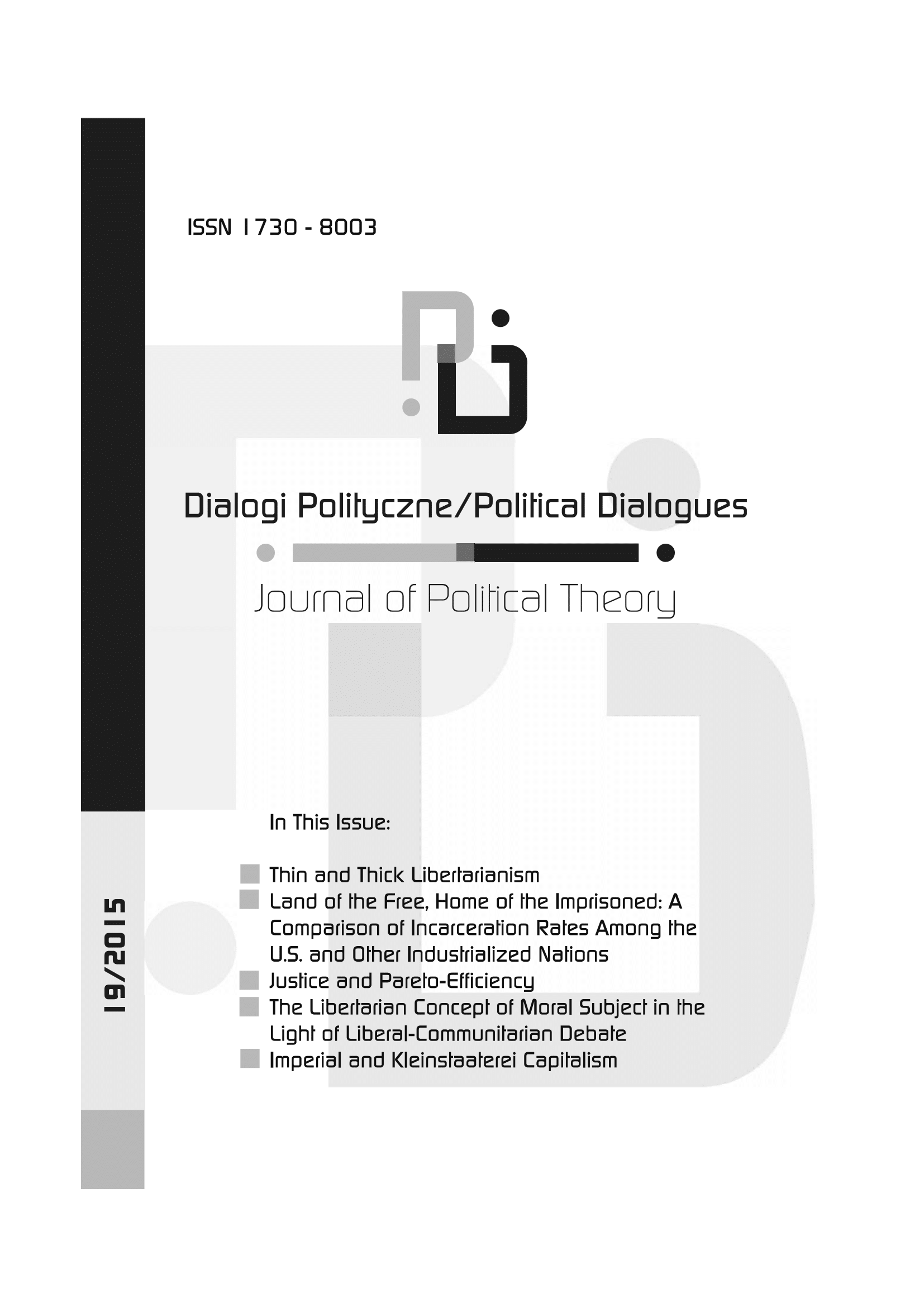Land Of The Free, Home Of The Imprisoned: A Comparison Of Incarceration Rates Among The U.S. And Other Industrialized Nations
DOI:
https://doi.org/10.12775/DP.2015.014Resumen
The United States has by far the highest incarceration rate in the world. This has not always been so. Before 1980, incarceration rates per 100,000 in the U.S. were less than half of what they are now. Higher crime rates are not a valid explanation.In fact, some have argued that there is no correlation between crime rates and incarceration rates. This paper will analyze the reasons why so much reliance has been put on incarceration in the U.S., why other countries (particularly those in Western Europe and Canada) have significantly lower incarcerationrates, and the policy implications for the U.S. criminal justice system.Citas
Aebi, M.F., & Kuhn, A. (2000). Influences on the prisoner rate: Number of entries into prison, and length of sentences and crime rate. European Journal on Criminal Policy and Research, 8, 65–75.
Austin, J. & Irwin, J. (2001). It’s about time: America’s imprisonment binge. Belmont, CA: Wadsworth Publishing.
Bernard, T.J. (1992) The cycle of juvenile justice. New York: Oxford University Press.
Blumstein, A. (2007). The roots of punitivenss in a democracy. Journal of Scandinavian Studies in Criminology and Crime Prevention, 8, 2–16.
Bogess, S. & Bound, J. (1997). Did criminal activity increase in the 1980s? Comparisons across data sources. Social Science Quarterly, 78(3), 725–739.
Byrne, J. & Hummer, D. (2005). “Thinking globally, acting locally”: Applying international trends to reentry partnerships in the United States. International Journal of Comparative and Applied Criminal Justice, 29(1), 79–96.
Diamond, S.S. (1990). Revising images of public punitiveness: Sentencing by lay and professional English magistrates. Law & Social Inquiry, 15(2), 191–221.
Doob, A.N., & Webster, C.M. (2006). Countering punitiveness: Understanding stability in Canada’s imprisonment rate. Law & Society Review, 40(2), 325–367.
Durnescu, I., Lazar, C., & Shaw, R.
(2002). Incidence and characteristics of Rroma men in Romanian prisons. The Howard Journal, 41(3), 237–244.
Graham, J. (1990). Decarceration in the Federal Republic of Germany: How practitioners are succeeding where policy-makers have failed. British Journal of Criminology, 30(2), 150–170.
Lappi-Seppala, T. (2000). The fall of the Finnish prison population. Journal of Scandinavian Studies in Criminology and Crime Prevention, 1, 27–40.
Luna, E. (2004). Misguided guidelines: A critique of federal sentencing. In G. Healy (Ed.), Go directly to jail: The criminalization of almost everything. Washington, DC: The Cato Institute.
Lynch, J.P. (1988). A comparison of prison use in England, Canada, West Germany, and the United States: A limited test of the punitive hypothesis. The Journal of Criminal Law & Criminology, 79(1), 180–217.
Mitchell, B. (1998). Public perceptions of homicide and criminal justice. British Journal of Criminology, 38(3), 453–472.
Piquero, A.R. & Blumstein, A. (2007). Does incapacitation reduce crime? Journal of Quantitative Criminology, 23(4), 267–285.
Sherman, L., Gottfredson, D., McKenzie, D., Eck, J., Reuter, P., & Bushway, S. (1997). Preventing crime: What works, what doesn’t, what’s promising. Washington, DC: U.S. Department of Justice.
Smith, K.B. (2004). The politics of punishment: Evaluating political explanations of incarceration rates. The Journal of Politics, 66(3), 925–938.
Stohr, M.K. & Collins, P.A. (2009) Criminal justice management: Theory and practice in justice-centered organizations. New York: Oxford University Press.
Stucky, T.D., Heimer, K., Lang, J.B. (2005). Partisan politics, electoral competition and imprisonment: An analysis of states over time. Criminology, 43(1), 211–248.
Suhling, S. (2003). Factors contributing to rising imprisonment fi gures in Germany. The Howard Journal, 42(1), 55–68.
Tonry, M. (1999). Why are U.S. incarceration rates so high? Crime & Delinquency, 45(4), 419–437.
Descargas
Publicado
Cómo citar
Número
Sección
Stats
Number of views and downloads: 1358
Number of citations: 0



